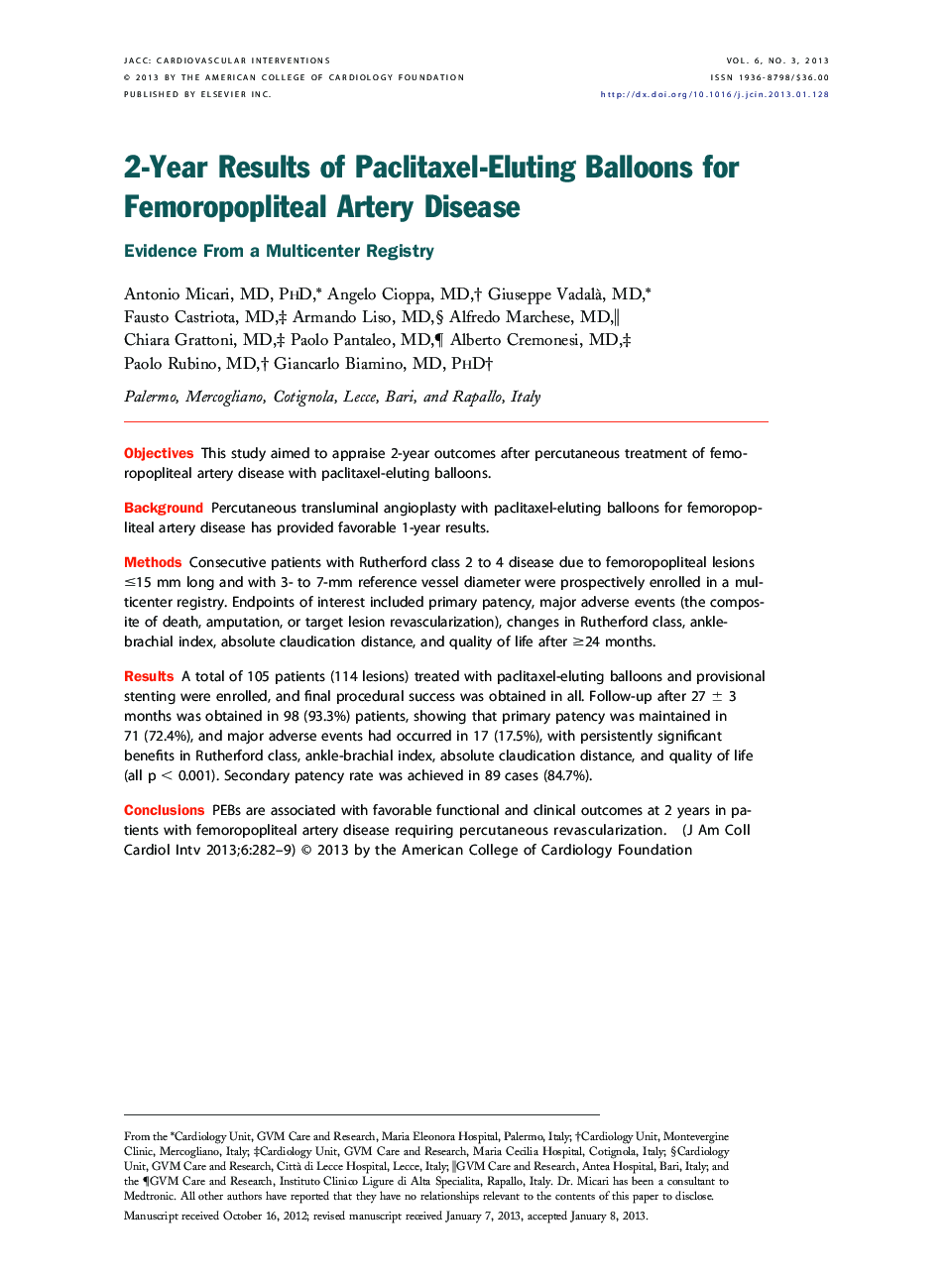| Article ID | Journal | Published Year | Pages | File Type |
|---|---|---|---|---|
| 2940490 | JACC: Cardiovascular Interventions | 2013 | 8 Pages |
ObjectivesThis study aimed to appraise 2-year outcomes after percutaneous treatment of femoropopliteal artery disease with paclitaxel-eluting balloons.BackgroundPercutaneous transluminal angioplasty with paclitaxel-eluting balloons for femoropopliteal artery disease has provided favorable 1-year results.MethodsConsecutive patients with Rutherford class 2 to 4 disease due to femoropopliteal lesions ≤15 mm long and with 3- to 7-mm reference vessel diameter were prospectively enrolled in a multicenter registry. Endpoints of interest included primary patency, major adverse events (the composite of death, amputation, or target lesion revascularization), changes in Rutherford class, ankle-brachial index, absolute claudication distance, and quality of life after ≥24 months.ResultsA total of 105 patients (114 lesions) treated with paclitaxel-eluting balloons and provisional stenting were enrolled, and final procedural success was obtained in all. Follow-up after 27 ± 3 months was obtained in 98 (93.3%) patients, showing that primary patency was maintained in 71 (72.4%), and major adverse events had occurred in 17 (17.5%), with persistently significant benefits in Rutherford class, ankle-brachial index, absolute claudication distance, and quality of life (all p < 0.001). Secondary patency rate was achieved in 89 cases (84.7%).ConclusionsPEBs are associated with favorable functional and clinical outcomes at 2 years in patients with femoropopliteal artery disease requiring percutaneous revascularization.
